Table of Contents
Commonly used in many Asian and Italian recipes, basil (Ocimum basilicum) is a world-famous herb primarily cultivated for its aromatic leaves. Surprisingly, both its flowers and stems carry flavor that goes well in sauces, stews, and stir-fries. Technically, basil (also known as great basil) has an annual lifecycle. However, you can plant basil at home as a perennial or biennial plant, especially hotter hardiness zones.
In the United States, the term “basil” may refer to sweet or Genovese varieties. These are common in most grocery stores and farmers markets where the leaves are frozen and packed.
Get to know the different basil varieties from our extensive list — all of which you can grow from your home garden.
Common Basil Types
Numerous basil varieties are available in seed markets. This culinary herb from the Lamiaceae or mint family provides a unique aroma and flavor, depending on the variety. If you live in the South, growing basil can be effortless because it can resist warm temperatures even in summer.
Before we introduce you to the basil varieties, let’s first differentiate their heirloom and hybrid categories.
Heirloom and Hybrid Basil
Genovese, Italian Large Leaf, Lemon, and Thai are some of the most popular heirloom varieties. To be considered heirloom, a variety should be free from any crossbreeding for at least 40 to 50 years. This type is popular for seed saving as you get the same traits of the parent plant. Across the globe, countless ethnic, familial, and social groups traditionally maintain these heirloom varieties as true to seed, being passed down from one generation to the next. In some cases, private institutions like seed companies and universities, maintain the heirloom variety.

Hybrid basil varieties come with some improvements. Agriculturists can manually and deliberately crossbreed two basil varieties, resulting in a hybrid. Favorable traits from both parents can be imbued to the seed, and thus, improvements on flavor, growth, and yield are possible. Additionally, hybrid plants can be made more resistant to diseases and pests.
Because of these advantages, large-scale farmers tend to opt for hybrid varieties.
Other Popular Basil Groupings
Discover other basil varieties grouped by distinct traits below.
Types of Basil Leaf Colors
Basil leaves come in two primary colors. Although basil varieties with bright green leaves are common, other varieties have purple leaves.
| Basil Leaf Colors | Common Examples (Where to Buy) |
|---|---|
| Green Basil Leaves | Genovese (Eden Brothers, True Leaf Market, Rare Seeds) Holy Basil Green Leaf (Territorial Seed Company, True Leaf Market) Profumo (Territorial Seed Company) Sweet Basil (Eden Brothers, Territorial Seed Company, True Leaf Market) Thai Basil (Eden Brothers, Territorial Seed Company, True Leaf Market) |
| Purple Basil Leaves | Persian (Rare Seeds) Purple (Eden Brothers) Purple Dark Opal (Eden Brothers, True Leaf Market, Rare Seeds) Red Rubin (True Leaf Market) Rosie (Territorial Seed Company) |
Types of Basil Leaf Sizes
Some basil varieties yield larger and more ruffled leaves.
| Basil Leaf Sizes | Common Examples (Where to Buy) |
|---|---|
| Large-/Lettuce-Leaf Basils | Emily (Territorial Seed Company) Evi (Territorial Seed Company) Lettuce Leaf (True Leaf Market, Rare Seeds) Mammoth or Mammoth Sweet (Eden Brothers, Territorial Seed Company) Prospera (Territorial Seed Company) |
| Small-Leaf Basils | Spicy Globe (True Leaf Market) Dwarf Greek (True Leaf Market) |
Types of Basil Leaf Sizes
Basil has been used in countless dishes due to its diverse flavors that vary depending on the variety.
| Basil Flavors | Common Examples (Where to Buy) |
|---|---|
| Pungent and Spicy Basils | Holy Basil Green Leaf (Territorial Seed Company, True Leaf Market) Cinnamon (True Leaf Market, Rare Seeds) Purple Ruffles (True Leaf Market) Red Leaf Holy Basil (True Leaf Market) Red Rubin (True Leaf Market) |
| Savory Basils | Genovese (Eden Brothers, True Leaf Market) |
| Sweet Basils | Corsican (True Leaf Market) Dwarf Greek (True Leaf Market) Licorice (True Leaf Market) Thai Basil (Eden Brothers, Territorial Seed Company, True Leaf Market) Thai Sweet Large Leaf (True Leaf Market) |
| Tangy Basils | Lemon (True Leaf Market, Rare Seeds) Lime (Eden Brothers, True Leaf Market, Rare Seeds) |
Types of Basil Scents
Adding freshness and bite to your meals, the bold aroma of basil can also stimulate your senses. Some basil varieties, such as lime basil, have been widely used in aromatherapy.
| Basil Scents | Common Examples (Where to Buy) |
|---|---|
| Citrus-Scented Basils | Italian Large Leaf (Eden Brothers, True Leaf Market) Lemon (True Leaf Market, Rare Seeds) Lime (Eden Brothers, True Leaf Market, Rare Seeds) Sweet Dani (True Leaf Market) |
| Sweet-Scented Basils | Anise (True Leaf Market) Lettuce Leaf (True Leaf Market, Rare Seeds) Licorice (True Leaf Market) Purple Dark Opal (Eden Brothers, True Leaf Market, Rare Seeds) Thai Basil (Eden Brothers, Territorial Seed Company, True Leaf Market) |
| Peppery- and Spicy-Scented Basils | Cinnamon (True Leaf Market, Rare Seeds) Clove Scented (True Leaf Market) Purple Ruffles (True Leaf Market) Spicy Globe (True Leaf Market) |
Types of Basil Lifecycles
Botanically, the basil plant is an annual herb, but it can be grown as a perennial under ideal conditions.
| Basil Lifecycles | Common Examples (Where to Buy) |
|---|---|
| Annual Basils | Genovese (Eden Brothers, True Leaf Market) Holy Basil Green Leaf (Territorial Seed Company, True Leaf Market) Italian Large Leaf (Eden Brothers, True Leaf Market) Persian (True Leaf Market, Rare Seeds) Red Rubin (True Leaf Market) |
| Perennial Basils (usually grown as annual in the U.S.) | Purple Dark Opal (Eden Brothers, True Leaf Market, Rare Seeds) Lemon (True Leaf Market, Rare Seeds) Licorice (True Leaf Market) Purple Ruffles (True Leaf Market) Sweet Dani (True Leaf Market) |
Types of Geographic Origins
Researchers believe that basil originated in regions of Asia and Africa. It later reached Europe during the 16th century and America in the 17th century.
| Geographic Origins | Common Examples (Where to Buy) |
|---|---|
| European/Mediterranean Basils | Mammoth or Mammoth Sweet (Eden Brothers, Territorial Seed Company) Genovese (Eden Brothers, True Leaf Market) |
| North American Basils | Cinnamon (True Leaf Market, Rare Seeds) Purple Dark Opal (Eden Brothers, True Leaf Market, Rare Seeds) |
| Asian Basils | Chinese Sweet (Rare Seeds) Holy Basil Green Leaf (Territorial Seed Company, True Leaf Market) Lemon (True Leaf Market, Rare Seeds) Lime (Eden Brothers, True Leaf Market, Rare Seeds) Siam Queen Thai (Eden Brothers, Rare Seeds) |
Types of Culinary Uses
Basil is an essential ingredient in Mediterranean and Southeast Asian countries. Different varieties can provide many different aromas and flavors.
| Culinary Uses | Common Examples (Where to Buy) |
|---|---|
| Basils for Raw Applications | Fino Verde (True Leaf Market) Licorice (True Leaf Market) Purple Ruffles (True Leaf Market) Red Rubin (True Leaf Market) Sweet Dani (True Leaf Market) |
| Basils for Soups/Stews | Holy Basil Green Leaf (Territorial Seed Company, True Leaf Market) Lemon (True Leaf Market, Rare Seeds) Minette Compact Greek (Eden Brothers) Spicy Globe (True Leaf Market) Thai Basil (Eden Brothers, Territorial Seed Company, True Leaf Market) |
| Basils for Sautéing/Stir-fry | Anise (True Leaf Market) Italian Large Leaf (Eden Brothers, True Leaf Market) Persian (True Leaf Market, Rare Seeds) Red Leaf Holy Basil (True Leaf Market) |
| Basils for Tea | Aroma II (Territorial Seed Company) Clove Scented (True Leaf Market) Profumo (Territorial Seed Company) Rosie (Territorial Seed Company) Sacred (True Leaf Market) |
Types of Disease Resistance
When growing basil at home, watch for signs and symptoms of bacterial leaf spot, downy mildew, and Fusarium wilt. Some varieties of basil are more resistant to these diseases than others.
| Disease Resistance | Common Examples (Where to Buy) |
|---|---|
| Disease Resistant Basils | Aroma II (Territorial Seed Company) Emily (Territorial Seed Company) Everleaf Emerald Towers (Eden Brothers, Territorial Seed Company) Evi (Territorial Seed Company) Profumo (Territorial Seed Company) Prospera (Territorial Seed Company) |
| Susceptible Basils | Genovese (Eden Brothers, True Leaf Market) |
Types of Preferred Growing Conditions
Basil can be grown in small garden beds or in containers along your patio. Whatever your garden needs, there’s a large range of choices in basil varieties. As a tropical herb, basil thrives in well-drained soil with adequate sun exposure.
| Preferred Growing Conditions | Common Examples (Where to Buy) |
|---|---|
| Greenhouse Basils | Dwarf Greek (True Leaf Market) Genovese (Eden Brothers, True Leaf Market) Mammolo (Rare Seeds) Purple Dark Opal (Eden Brothers, True Leaf Market, Rare Seeds) Sweet Basil (Eden Brothers, Territorial Seed Company, True Leaf Market) |
| Field Basils | Evi (Territorial Seed Company) Prospera (Territorial Seed Company) |
| Container Basils | Lemon (True Leaf Market, Rare Seeds) Holy Basil Green Leaf (Territorial Seed Company, True Leaf Market) Purple Ruffles (True Leaf Market) Thai Basil (Eden Brothers, Territorial Seed Company, True Leaf Market) Try Basil Simplyherbs™ (Territorial Seed Company) |
Popular Varieties of Genovese or Sweet Basils

Perhaps the most familiar basil type, Genovese basil is common in many grocery stores. Leaves from this basil type offer a strong aroma and flavor that go well in Italian cuisine. If you’re looking for a classic option, look no further. Genovese are traditionally used in salads, pastas, pesto, and pizzas. Other name for Genovese include Italian basil, and sweet basil.
| Variety | Description | Mature Height | Days to Maturity | Where to Buy |
|---|---|---|---|---|
| Aroma II | Aroma II is an improved Genovese-type basil variety with intermediate resistance to Fusarium wilt. Apart from its culinary uses, the basil leaves can be steeped into a tea. | 20 to 24 inches | 70 to 75 days | Territorial Seed Company |
| Dolce Fresca | In 2015, the Dolce Fresca variety won an All-America Selections award for its compact shape and resilient growth. It works as an ornamental plant too, efficiently growing leaves after harvest to maintain its eye-catching shape. Unlike other basil varieties, Dolce Fresca can tolerate drought. | 10 to 14 inches | 70 to 75 days | Territorial Seed Company |
| Emily | Known for its rapid regrowth, Emily grows in a compact plant structure, perfect for container planting. Its basil leaves give off a sweet aroma, which can be enjoyed in teas. Emily boasts intermediate resistance to Fusarium wilt. | 12 to 18 inches | 60 to 70 days | Territorial Seed Company |
| Everleaf Emerald Towers | Resistant or impervious to downy mildew and Fusarium wilt, Everlead Emerald Towers yield robust-flavored basil leaves in a columnar plant structure. This variety can be grown in a container or in a field. | 24 to 36 inches | 45 to 60 days | Eden Brothers, Territorial Seed Company |
| Genovese | The common Genovese basil variety offers savory flavors suitable for making pesto. | 24 to 36 inches | 36 to 41 days | Eden Brothers, True Leaf Market |
| Prospera | This large-leaf basil can be grown in a container, field, or greenhouse. It is an adaptable, Genovese-type basil with resistance to both downy mildew and Fusarium wilt. | 10 inches | 70 to 75 days | Territorial Seed Company |
Popular Varieties of Holy Basils

Holy Basil or Tulsi has a prominent role in Indian and Thai cuisine and culture. Apart from its great culinary uses, Holy Basil varieties are cultivated for their medicinal properties. In the Hindu religion, it is revered as an avatar of the goddess Lakshmi.
| Variety | Description | Mature Height | Days to Maturity | Where to Buy |
|---|---|---|---|---|
| Holy Basil Green Leaf | In summer, Holy Basil Green Leaf produces purple flowers that attract bees and other pollinators. Leaves from this medicinal herb can be prepared for drying or used fresh in teas. | 24 to 36 inches | 65 to 75 days | Territorial Seed Company, True Leaf Market |
| Red Leaf Holy Basil | This heirloom basil variety shares attributes with its green counterpart—though its leaves have a purple tinge. Additionally, Red Leag Holy Basil has uniquely purple stems. | 24 to 36 inches | 65 to 75 days | True Leaf Market |
Popular Varieties of Thai Basils

With flavors similar to anise and licorice, Thai basil leaves can withstand hot temperatures during cooking. Thai varieties are an excellent option for stir-fry.
| Variety | Description | Mature Height | Days to Maturity | Where to Buy |
|---|---|---|---|---|
| Siam Queen Thai | Another All-America Selections awardee, the Siam Queen Thai basil variety has a licorice spice with late-flowering growth, leading to a greater herb harvest. In terms of width, it can reach up to 2 feet. The spicy flavor from this variety work deliciously in meat dishes. | 24 to 30 inches | 75 to 80 days | Eden Brothers, Rare Seeds |
| Thai Basil | Expect less wilting when cooking Thai basils. Have the leaves in soups, stews, or stir-fries for a warmer kick. This variety is less susceptible to downy mildew. | 14 to 18 inches | 60 to 90 days | Eden Brothers, Territorial Seed Company, True Leaf Market |
Other Varieties of Basil

The basil plant is particularly tricky to categorize by type because cross-breeding between varieties can occur easily. We’ve listed more notable basil varieties you should consider before planting in your herb garden.
| Variety | Description | Mature Height | Days to Maturity | Where to Buy |
|---|---|---|---|---|
| Blue Spice | Usually cultivated as an ornamental plant, the Blue Spice or African Blue Spice basil variety is a fast-growing annual with a unique vanilla-like fragrance. It produces beautiful, purple flowers that enhance your vegetable garden’s color. | 18 to 20 inches | 70 to 90 days | Eden Brothers |
| Cinnamon | Cinnamon basil can be used for making warm herbal tea or applied fresh as garnish in meals. The aromatic green leaves can reach up to 2 inches long. | 18 to 30 inches | 60 to 90 days | True Leaf Market, Rare Seeds |
| Clove Scented | With an aroma similar to clove and mint, Clove Scented is suitable for container planting. This heirloom variety can be harvested as a microgreen. | 18 to 24 inches | 80 to 85 days | True Leaf Market |
| Dwarf Greek | Considered one of the oldest and smallest varieties of basil, Dwarf Greek basil can thrive in tight patio or porch containers. Its green, small leaves can be used in Italian and Mediterranean recipes. | 6 to 10 inches | 65 to 75 days | True Leaf Market |
| Lemon | Lemon basil is a Southeast Asian herb staple, bringing in bright, citrus flavor in Indian, and Indonesian cuisines. This variety grows small white flowers. | 24 to 36 inches | 60 to 90 days | True Leaf Market, Rare Seeds |
FAQ About Types of Basil
How many basil cultivars or varieties are there?
Basil is part of the Ocimum genus / Lamiaceae family. According to researchers, there are over 160 species of true basil.
Which basil type is the most common?
Among different types of basil, sweet basils, also known as Genovese basisl, are the most common types cultivated for commercial selling. They have versatile culinary uses with their leaves used in pesto, salads, sauces, and soups. Varieties of sweet basil include Aroma II, Emily, common Genovese, and Prospera.


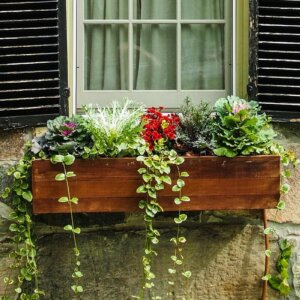


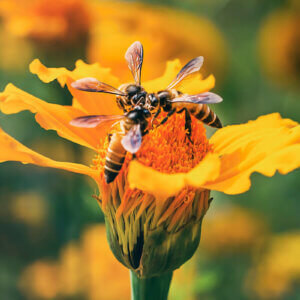



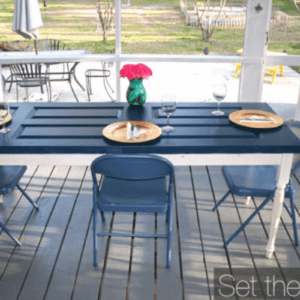

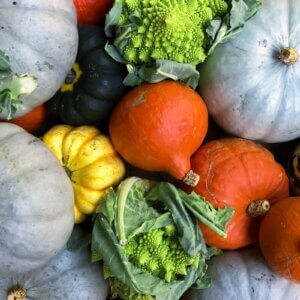
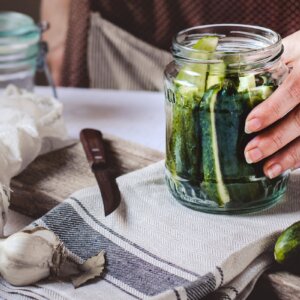
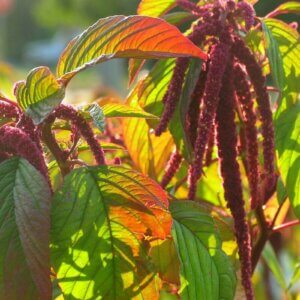
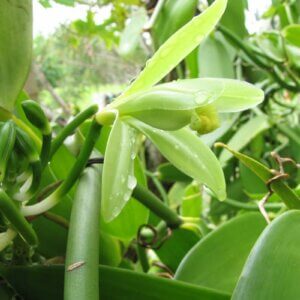
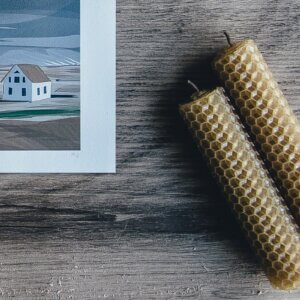
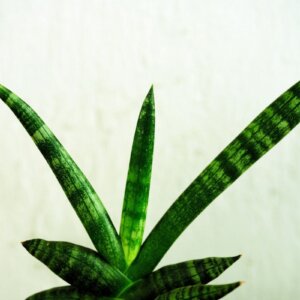

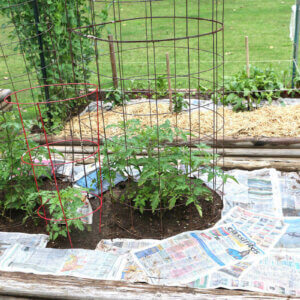
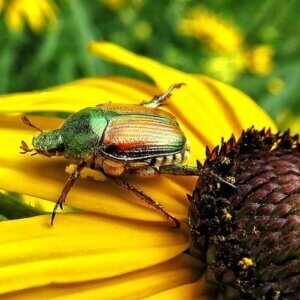

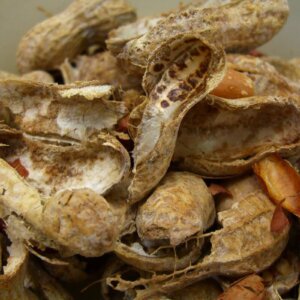
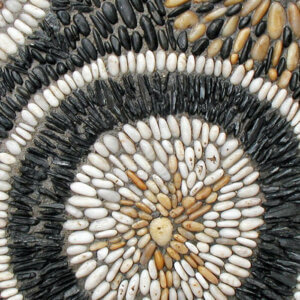
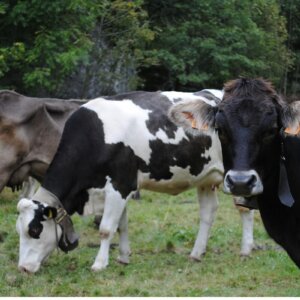

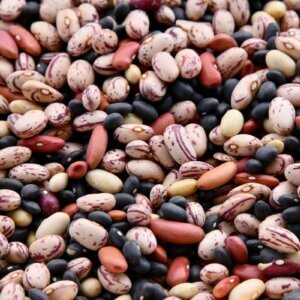

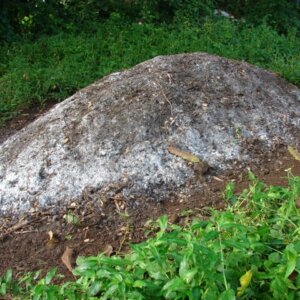

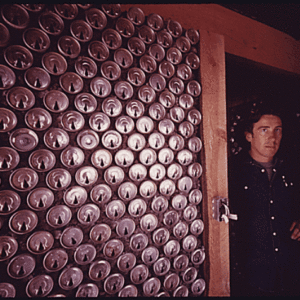
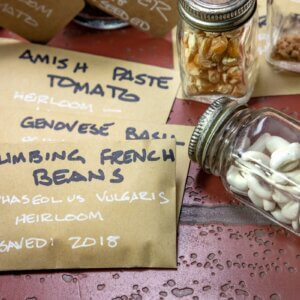

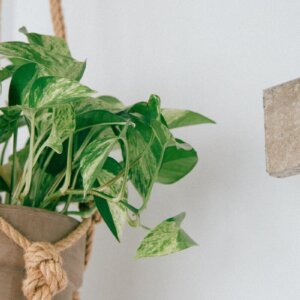

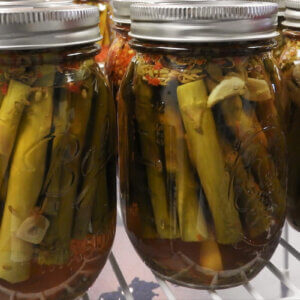

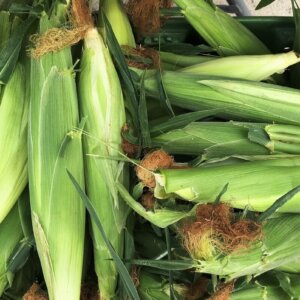

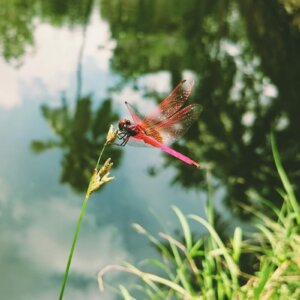
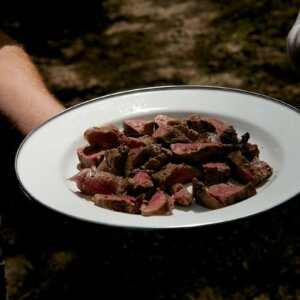

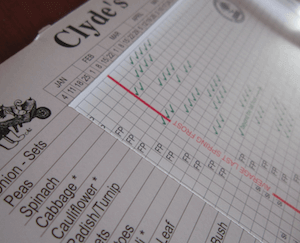
Leave a Reply